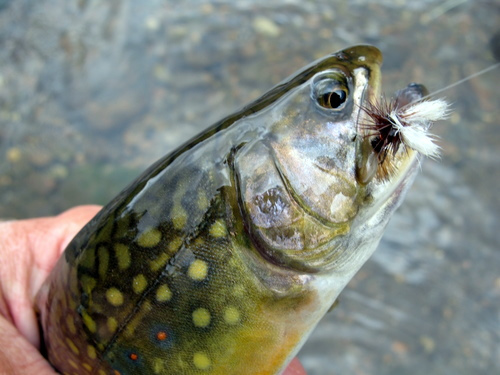Creede has a little run called the Snowshoe Shuffle that is scheduled the first Saturday in August. This year was the 25th running of the race. It’s a 5K race that goes uphill for the first half and downhill for the second half–of course this is at 9,000 feet. I wasn’t thinking about running it but I did win my age group a couple of years ago so I thought I’d best “defend” my title. Oh, did I mention I also took last in my age group? Yep, I was the only runner. At any rate as I was heading downtown to register for the race early in the morning I happened upon this fly, laying on the sidewalk in front of the fly shop.
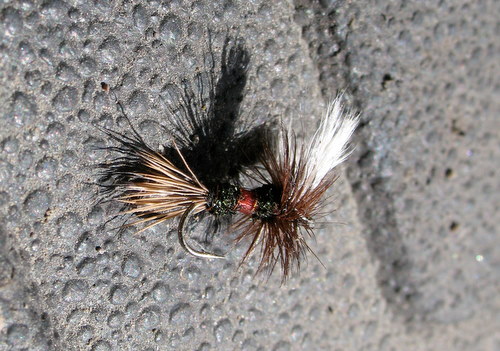
This is the classic attractor fly formally known as the Royal Wulff but also known as a brookie killer. It was the fly that enticed my first trout caught flyfishing–a brook trout of course. You may not be able to see it but there hint of tippet still attached. Finding the fly and reading Niki’s post, combined to inspire me to fish for brook trout the next morning. I stashed the fly and went on to register for the race. Unfortunately, there were more runners entered in my age group than any other group–I had to settle for fourth this year and 16th overall. (Martin. I’ll pay your entry fee next year if you want to give it a go, but not your emergency care ;-))
Now, the question became where to fish? I could go upstream from Creede to some beaver ponds where I caught my first brook trout on a fly rod or I could head for one of the small streams that flow out of the various wilderness areas in this part of Colorado. I chose the later, I come to Colorado to fish moving water. I chose a small stream nearby that required 10 miles of dirt road and a short 2 mile hike in to the wilderness area. That 2 mile hike pretty much guarantees the fish will not be pressured and the brook trout run larger than average in this creek. Here’s my pack, ready to go with the mandatory polarized sunglasses–essential equipment and my new wading sandals that I really love for this type of fishing.
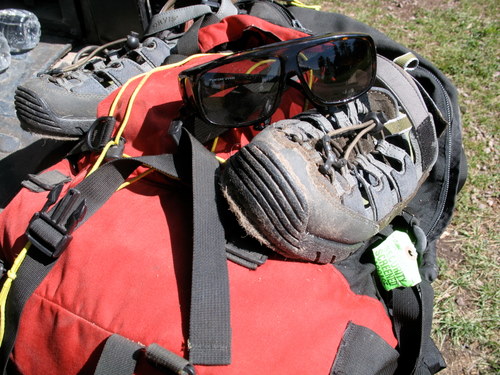
Here’s a few snapshots of the hike in.


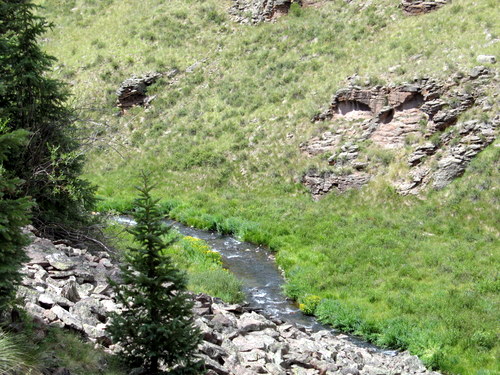
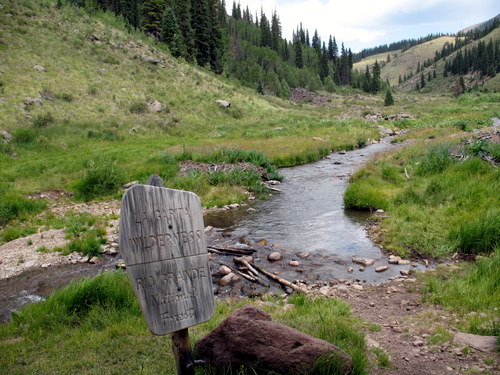
I mentioned that my first trout (char) on a fly rod was a brookie. Brook trout are not native to Colorado (they are endemic to eastern North America) but they have become so ubiquitous in the small streams that they make a perfect fish for the beginning flyfisher. They are kind of the green sunfish of Colorado—they are everywhere in small water and easy to catch. As an example, last year at one beaver pond, staying in one spot, I caught thirty 6-8 inch brookies. I only fish for brookies with dry flies. You don’t have to feel guilty about keeping and eating brook trout in Colorado and they do taste good.
When you arrive at the creek, you first notice this small run that is deeper than most because the hikers have tried to create a rock bridge across the stream.
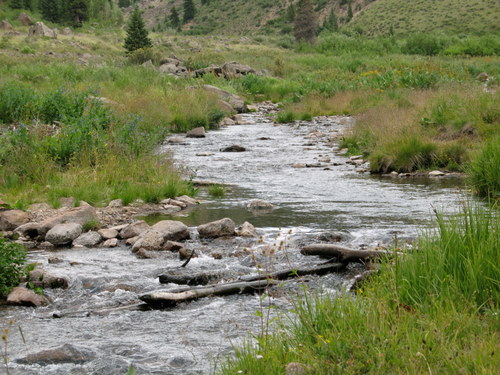
The bridge doesn’t work well but it sure makes a nice pool for brook trout. Looking over this pool, I saw several trout surface feeding on these.
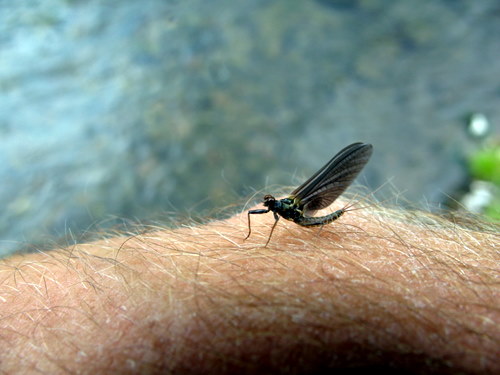
I should have fished an Adams but I had come to fish the Royal Wulff. I rigged up the new 3 weight TFO that Ron talked me into a couple of weeks ago and started to fish the pool. (Nifty rod, btw)
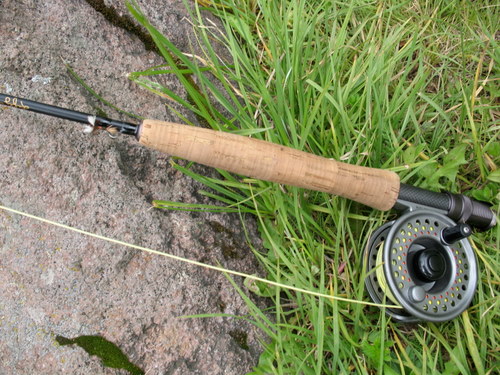
I started at the tail end of the pool and missed the first couple of strikes. These high mountain stream trout are very quick and you have to be too if you are going to catch them. This is why you need sunglasses. A couple of years ago on a similar stream a buddy I was fishing with forgot his glasses and he simply could not see the fly or the trout rising to the fly in time to do anything. After the first two misses, I was back in snych and quickly started catching several brookies. I caught about 12 out of this pool before they stopped hitting. Brook trout may not be big (in small streams in CO) but they make up for it with some of the most unbelievably beautiful coloration. Ditch wanted some picts so here’s some (mostly of the same fish):
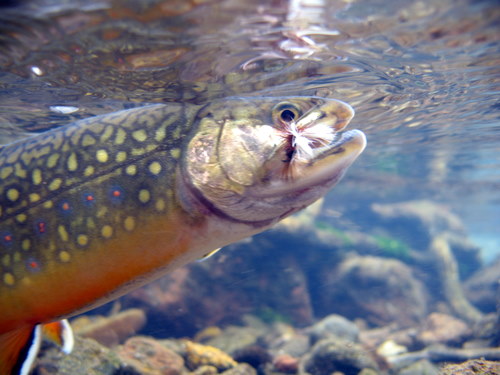
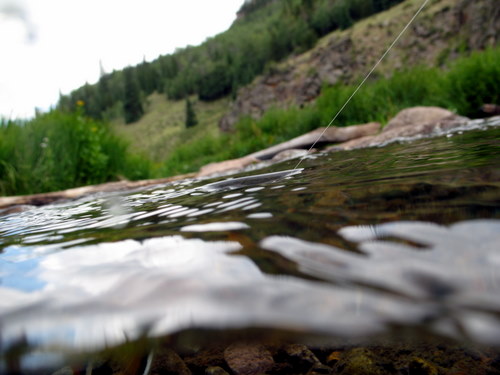

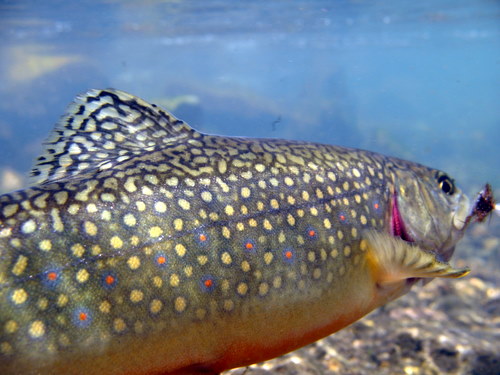
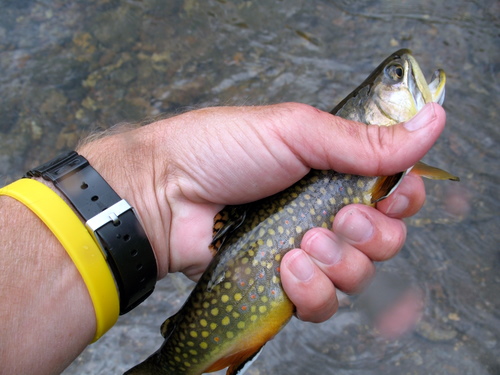
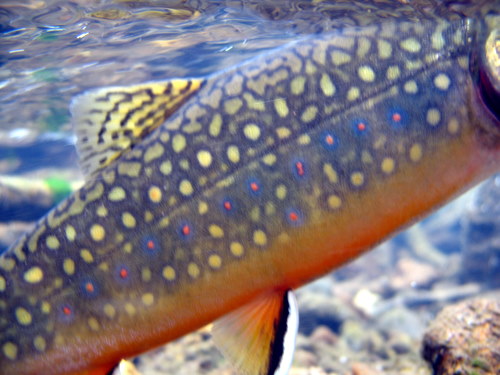
I moved downstream (usually I go upstream) and tried some other types of runs and pocket water. Here’s a nice brookie that I caught by swinging the Royal Wulff within a couple of inches of the mossy bank.
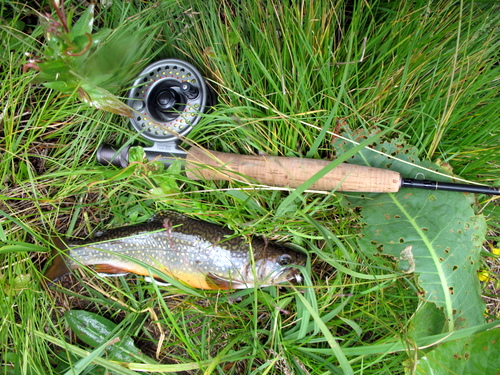
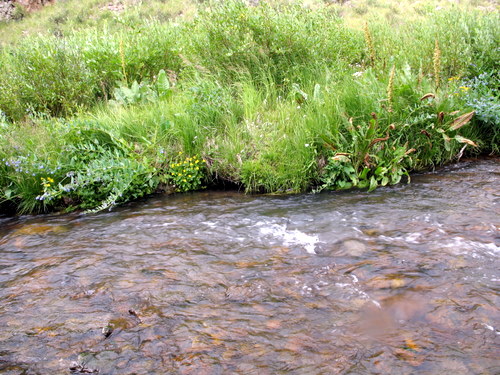
This is what happens to brookies that are not skitish enough. (note the drake resting on the carcass to the right).
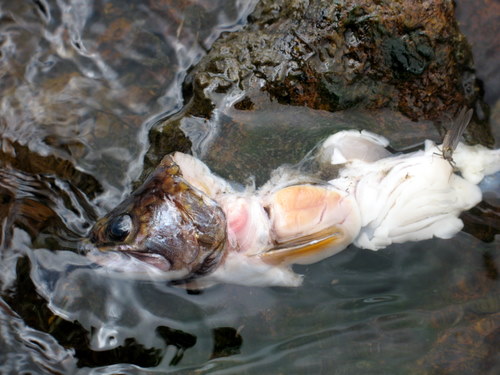
After enticing more than a dozen brookies the Royal Wulff was pretty much in tatters so I switched to a parachute Adam’s

By this time I was able to go back to the original pool to fish–just as a hiker from Olathe came by. He waded through the pool while asking me how the fishing was. Despite his wading the fish continued to rise. I pointed out the rising fish and since I now had on the parachute Adam’s I figured I could start catching them again–sure enough.
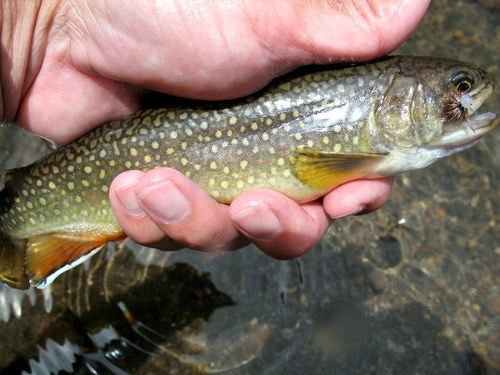
All this happened in less than an hour but I was pretty much done. I explored a bit upstream for future reference and then hiked out. Since I mentioned the beaver ponds, later in the day, I thought I’d drive up and take a picture of the pond where I caught my first brook trout on the Royal Wulff. Look closer and you’ll notice the rings of rising trout. They are still there, all these many years later.
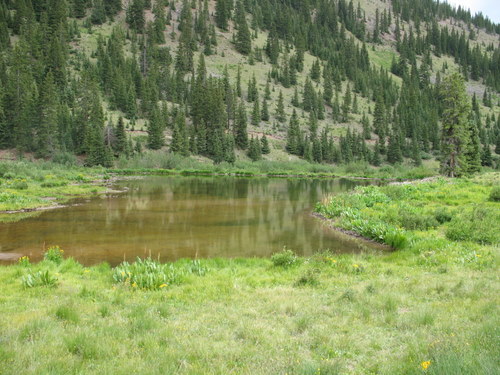

As the rings faded I suddenly remembered that this is the pond where my son caught his first trout, a cooperative brookie, on his new fly rod, more than 15 years ago–on a Royal Wulff.
BW
